The Type 54: The Longest Lasting Military Service Pistol
I want you to think of the oldest service pistol still in active use right now. Mull over the concept for a bit as it is a tad daunting. Very vague. Oldest service pistol. Lot of potential options are rolling around in your mind. 1911? Possible if you’re willing to argue things such as Thai or Brazilian clones. Hi-Power? Definitely still in use, but it’s not that old. But both designs, even still in use have been modified. For this, I’m talking about a gun that has remained basically unchanged bar a few fixes for 50+ years. What gun is that?
The Tokarev. The TT-33. A handgun most known as the one that was railroaded out of the Soviet Union after WWII in favor of the Makarov. But, courtesy of a Chinese copy, it remained in use and production far past the sell-by date. But how did that happen? How has the Type 54 Tokarev persisted on the market?
THE TT-30/TT-33
In 1930, the Soviet Military began a process of modernizing it’s equipment and strategy as the burning embers of their attempted revolutionary conflict slowly faded away. Lenin had died, Stalin was slowly making his rise in power and the Red Army had come out of a triumph with the Russian Civil War and middling success in conflicts against nations such as the Baltic States, Poland and attempted involvement in the Finnish Civil War. In this air of reorganization, they would convene the Revolutionary Military Council together to discuss new various programs to modernize the Red Army. This would authorize a variety of programs throughout the 1930’s for fixing latent issues in the Red Army’s structure. The pistol, as humble as it seems, was one of the bigger issues at the moment.

At that moment, the Red Army was still reliant on the M1895 Nagant revolver, adopted by the Tsarists and used by both sides during the war. A 7 shot SA/DA revolver with a gate loader and a wonky gas seal mechanism, it was a cludge of a design that served as one of the last European gate loader revolvers before semi-automatics swept the scene. During WWI and subsequently the Russian Civil War, a plethora of semi-automatic designs flooded the nation, ranging from the C96 Mauser to more modern models like the FN 1903, Ruby and the M1911. So when the Council began opening up trials for this concept, the many Soviet designers would pool from these various influences, including Fedor Tokarev. As trials continued, the Tokarev designed handgun would become the most prominent and popular design out of the lot, and subsequently the Council would put up a formal order for 1,000 of the handguns. Following the success of these trials, the new “TT-30” would be adopted as Red Army standard issue. A few issues had cropped up with testing, and design changes were made to the trigger, disconnect, locking lugs, frame and other small improvements that would be bundled into a new model dubbed the “TT-33.” Production would slowly phase out the earlier TT-30 in favor of this new design, with only around 93,000 original TT-30’s being produced.
While production began to spool up to meet the demands of the Red Army, Operation Barbarossa would throw these plans into disarray.

While the official first “use” of the TT-33 in any way is debatable, a few examples had made it to the Spanish Civil War through Soviet material aid, and the various Stalinist purges had seen them used in less than ethical ways, the handgun would prove it’s usefulness in World War II, or the “Great Patriotic War” according to the Soviet Union. While the handgun was nominally the standard issue sidearm of the Soviet Union, the strains on the Soviet supply line and industry meant that the exact amount was in flux, and both the TT-33 and the handgun it intended to replace, the Nagant M1895 would be kept in production and use throughout the conflict. By the end of the war, total production of the Soviet TT-33’s had reached 1,330,000 and the handgun had finally achieved it’s role in almost replacing the M1895 in mainline service, allowing the revolver to fade into reserve roles or with groups less likely to need a sidearm such as tankers and pilots.
Post war reorganization of the Red Army would not be kind to either pistol, as the military elected to learn from the lessons that it had faced during the war by adopting new equipment, doctrine and tactics. This would stretch across the entire military, but even the pistol wasn’t spared this glance. Criticisms about the TT-33’s issues, especially in contrast to German weapons that the Soviets had faced began to crop up. The fact it was a single action only design instead of the single action/double action P-38, or the fact it lacked any external safety beyond a hammer half cock notch. With the adoption of the AK-47, and the slow reduction in use of the Soviet submachine guns like the PPSh-41 and PPS-43, the writing was on the wall for the Tokarev. And in 1951, that writing would come in the form of it’s replacement, the Makarov PM. The TT-33 and M1895 Nagant would be replaced by the new PM, and production for both cut off moving into the 1950’s. Officially, TT-33 production in the Soviet Union ended in 1955.
THE NON-RUSSIAN TOKAREVS
In the wake of WWII, the Soviet Union had elected to create as much of a buffer zone between it and the Western powers as it could muster, and while the Allies would rebuild the various nations of Western Europe, the Soviets did the same with Eastern Europe. Across the various nations, the Warsaw Pact was created bit by bit of newly reorganized communist nation states that were firmly in control both economically and militarily by the Soviet Union. As such, many of them were given Soviet military aid to re-establish their military forces in earnest. And, in an aid to also bolster the economies of each of these nations and keep the Warsaw Pact equipped with the same weapons, the Soviet Union would provide the technical packages to their firearms to these nations. Trickling down as the Soviets would draw down production of their own equipment, this would start off as WWII hand-me-downs. PPSh-41’s, DP-27’s and DPM’s, the M91/30 Mosin-Nagant and the TT-33 Tokarev.
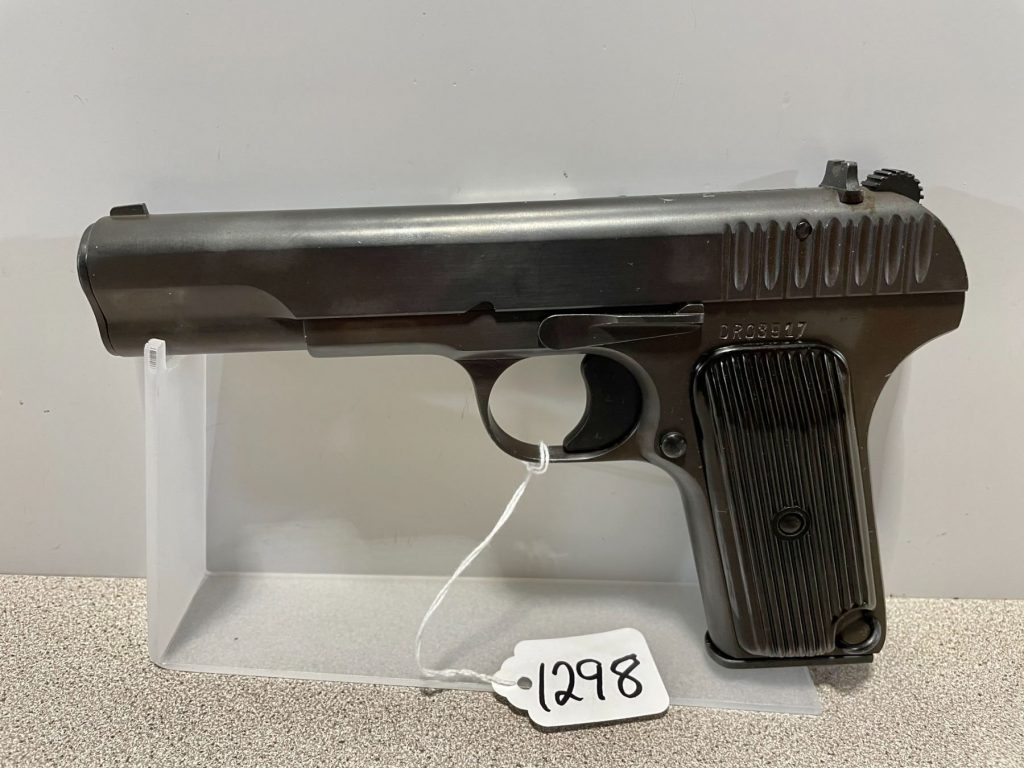
In the late 40’s and early 50’s, the TT-33 would be picked up by the Polish People’s Republic, Romanian People’s Republic and the Hungarian People’s Republic as their new default sidearms. The East Germans elected to maintain their usage of WWII stockpiles of Luger P08’s and Walther P-38’s, while the Czechslovakian People’s Republic chose their domestic Cz. vz. 52 pistol. While these were useful for rebuilding the armies of these nations along the lines the Soviets had wanted, over time they’d all drift away from the Tokarev towards more modern designs, as the Soviets had done. The Polish would elect for the domestic single action/double action P.64 pistol. Romania would continue with the Tokarev until they acquired the technical package for the Makarov in the mid 1960’s, although with strained relations between themselves and the Soviet Union in the late 60’s, would choose the Walther PP based Carpati. 1974 instead and use that to replace their stocks of Makarovs and Tokarevs.
Hungary would be the last holdout of the TT-33 in the Warsaw Pact, manufacturing the first model rechambered for 9×19 Parabellum as the M48, and using it for a few decades before phasing it out for similar Walther PP based pocket pistols. They’d also develop a modified model for export sale to the Republic of Egypt, featuring recontoured grips and the addition of a manual safety mounted at the rear of the grip frame near the hammer. Dubbed the Tokagypt 58 by collectors, both it and other Hungarian handguns were made under the intention that they’d be sold to the Egyptian Army and Police, but deteriorating relations between both Egypt and Hungary meant the deal fell through. The Tokagypts would be sold through West German company Hege instead, and both them as well as war surplus TT-33’s became some of the first Tokarevs to float into gun markets abroad.

The final manufacturer of TT-33’s on the European continent is Yugoslavia, the dubiously aligned nation in Eastern Europe. Due to the constant grating of politics between the Soviet Union and Yugoslavia, they would get military aid but never any true technical packages like the actual members of the Warsaw Pact. However, they had made a system of reverse engineering firearms and producing them in-house to keep themselves supplied and self-sufficient. With the reorganization of Zastava in 1944 and production of rifles like the M48 and M53 GPMG, clones of the Kar98k and MG42. This gave Zastava a taste into a skill they’d hone over the Cold War, reverse engineering firearms for themselves. And to take advantage of shared ammo types with their neighboring Warsaw Pact nations, the Yugoslavians would engage in a series of reverse engineering programs with a variety of Soviet firearms during the Cold War. This included the M59 SKS, and the later modified M59/66, the M70 AK series, the M84 PKM variant and their own version of the Tokarev.
Dubbed the M57, the Yugos would modify the design with a slightly longer grip, bumping the handgun from an 8+1 capacity to a 9+1. They would, like the Hungarians, modify the Tokarev with a frame mounted safety with the M57A model, and later on make a 9×19 export model known as the M70A. Adopted as JNA standard, it would be used throughout the 50’s through until the end of Yugoslavia in 1991 and the various Balkan Conflicts to come. It also would inspire other models intended for other Yugo specific markets such as the M70 .32 ACP pocket pistol and the later M88 and M88A. While surplus models were commonly imported into America, Zastava USA themselves have begun importing new production M57A’s into the market. Thus keeping the legacy of the Tokarev somewhat alive in America.
Of course, now that we have the continental manufacturer’s squared away, it’s time to talk about the biggest non-European Tokarev manufacturer.
China.
THE TYPE 51/TYPE 54
With the unofficial end of the Chinese Civil War in 1948, the Chinese Communist Party had created the People’s Republic of China on a combination of populist rhetoric, overwhelming numbers and Soviet aided tanks. This air of co-operation between the two communist nations meant that, while the PRC was not officially a member of the Warsaw Pact, it would receive the same similar technical packages. These were useful in rebuilding the shattered industry of a China that had suffered decades of political instability, a Japanese invasion and a brutal civil war back to back. The arsenal system of the former Republic was scattered and filled with a myriad of designs that the new People’s Liberation Army had no need of. To keep this co-operation, they’d elect to replace their earlier firearms with Soviet designs, and started with the Type 50, a clone of the PPSh-41. This would be followed soon after by the Type 51, a direct copy of the TT-33 Tokarev. This exact model wouldn’t last as the PRC would get it’s first taste of non-civil conflict with it’s intervention in the Korean War.
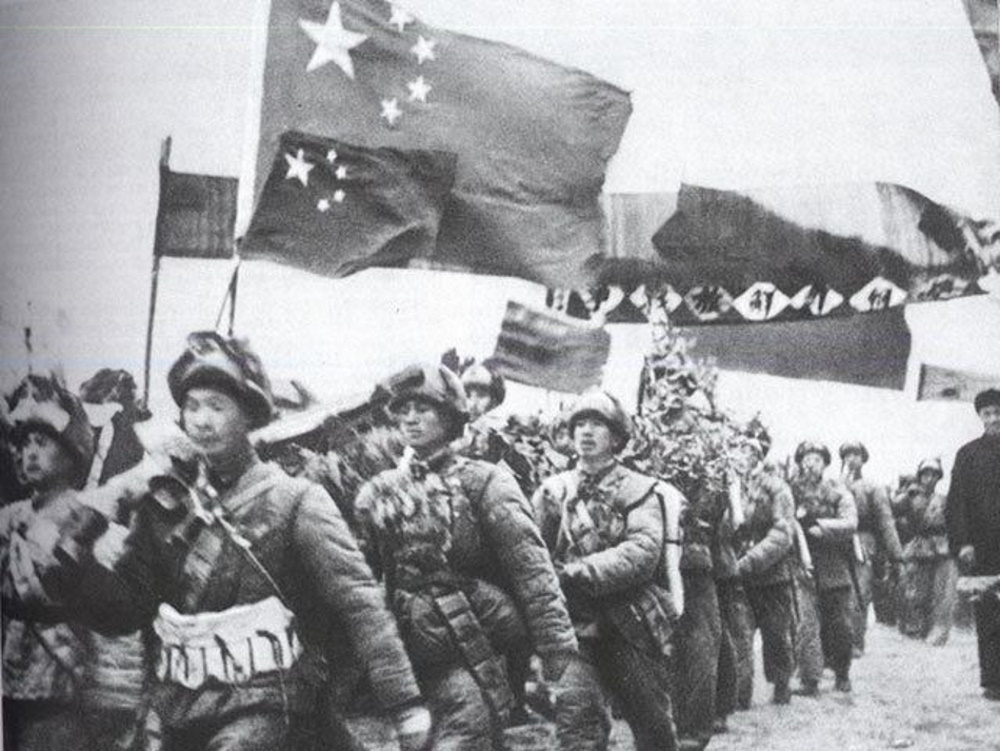
The People’s Volunteer Army would change the tide of the war in the favor of the Communist North, but equipment issues would folly them every step of the war. They were reliant on a myriad of equipment, including not only Soviet and newly produced domestic Chinese equipment but also holdovers from WWII such as Imperial Japanese and Kuomintang era rifles, machine guns and so on. These issues would press the People’s Liberation Army’s high command to push for more production of equipment moving forward, including a revised version of the Type 51 pistol. Now relying on domestic manufactured parts, this new model was dubbed the Type 54. It would be joined by the new Type 56 SKS and AK-47 rifles, and became part of the burgeoning new People’s Liberation Army.
These weapons would also become very common in various Communist insurgencies and nations across the globe, as the Chinese were more open to sharing them with fellow comrades than the Soviets. Insurgent groups such as the Vietminh and later Pathet Lao, Khmer Rouge and Vietcong would rely on Chinese arms to maintain their insurgent wars against everyone from the French to the South Vietnamese and American forces during their various wars for independence. Chinese Tokarevs became standard issue to the PAVN during the Vietnam War and were so common that the Chinese factories made a special version known as the “M20” to masque the origins of the pistol. A sanitized model. However, as the Vietnam War rages on and the world focuses on that, a new change begins to shake up the country that the Type 54 hailed from. The biggest fundamental change in Asian history was to occur.
The Cultural Revolution.
Red Sun In The Sky
Starting in 1966, Chairman Mao Zedong would begin preaching a new political philosophy that saw his return to the mainstay of CCP politics, his reputation tarnished by the failures of the Great Leap Forward in the late 1950’s. With claims that the bourgeois had begun taking root in China again, he began preaching a revolutionary and violent form of communism and called for the young people of China to lend their hands to the safety of their homeland. These young revolutionaries would organize into groups known as the “Red Guards” and establish their own councils outside of the control of any local or province level governments, and through pure shock and awe would seize control of those same councils for themselves. The constant conflict would be brutal, and requiring in several intervals for martial law and the summoning of militias and the PLA to put them down. This mindset, egged on by the preaching of Mao would begin a new age Red Terror, and the Red Guard would take to the streets to begin purging the nation of its ills. With the proclaiming of the “Five Black Categories”, the purges would soon turn onto the intellectuals, schools and any supposed enemy of the state. Enemies of the state faced everything from beatings, mass public shaming known as “struggle sessions”, being sent to re-education camps or worse.
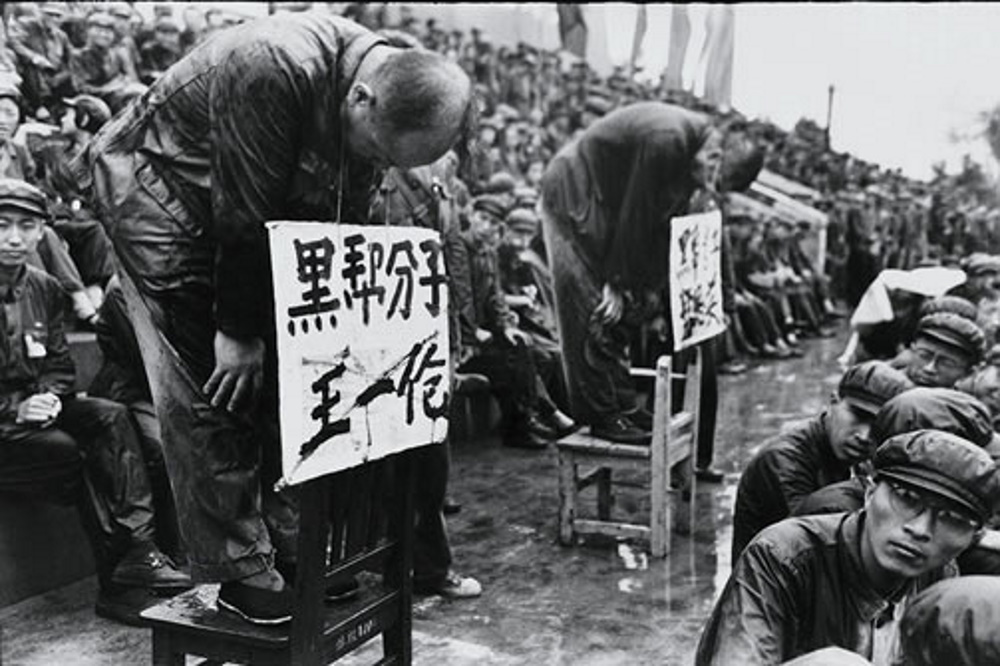
When key members of the Central Committee began openly supporting the Red Guards activities, things began to spiral more and more out of control as more people flocked to the tide of the Revolution. The passing of the Sixteen Points by the same committee elevated the Revolution beyond mere students, encouraging every walk of life to get involved. And soon, this would turn from simple public shaming into a full blown Red Terror with Red August. A large scale rally in Tienanmen Square helmed by Mao Zedong and his lead general Lin Biao would encourage the Guard, leading to a massacre that swept through Beijing killing 1,772 people in the subsequent purges and crackdowns. This would begin the spiral of reprisal style purges, as the Red Guards sweeped through the provinces of China searching out and killing suspected enemies of the Revolution. The provinces of Guangdong, Hunan and Yunnan would see massacres in the high 10,000’s range, and the worst would occur in Guangxi Province. Upwards of 100,000 to 150,000 people were killed, in a variety of methods ranging from the humane to the gruesome. Some were even cannibalized. As the Red Guard began to spiral more and more into violence, and the Type 54 would be carried along as both the bringer of revolution, and in some cases soon, the method of putting it down.
In 1969, Mao would declare the Cultural Revolution to be over. However the Revolution had been whipped up into a frenzy, and it was one that not even the father of the People’s Republic could not really wrangle. This frenzy would lead to the various border skirmishes with the Soviet Union in the same year, formalizing the Sino-Soviet Split and cutting the communist world in half. In 1971, high ranking Marshal of the PLA Lin Biao, the same man who had been with Mao at Beijing would attempt to flee the country and perish in a plane crash. Following his death, the Central Committee would charge him with a conspiracy to kill Mao known as Project 571, a coup attempt in an attempt to stop Mao and his revolution. A shock to Mao who considered Biao a dear friend, but it was enough to allow a new force to rise in power in China in an attempt to helm this revolution themselves. As the Chairman became reclusive at the supposed betrayal of his friend, an elite clique from his inner circle would come into play. The “Gang of Four.”
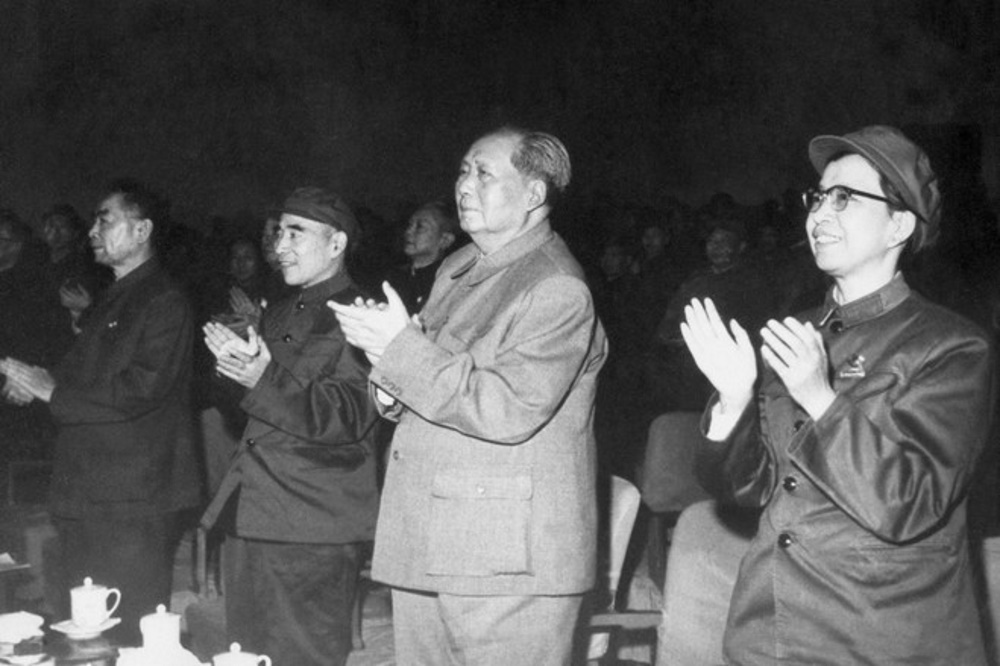
Lead by Jiang Qing, Mao Zedong’s wife alongside Zhang Chungqiao, Yao Wenyuan and Wang Hongwen, they would take control of the government defacto alongside current acting Premier of the People’s Republic of China Zhou Enlai starting in 1972 with more control being gained into 1973. While Mao had attempted to see the Red Guard’s power broken and the revolution reigned in, as it had done so much damage both to the internals of China as well as geopolitically speaking, the Gang of Four didn’t aim to do so. They aimed to maintain the revolution, although many things were becoming problems as the time went on. The economy was teetering on a fine line between recession and collapse, relations with outside nations was only lukewarm with the West and openly hostile with the Soviets, and to make matters worse their biggest political connection was not in good standing health wise. Zhou Enlai was constantly fighting bladder cancer throughout the 1970’s, and the Gang of Four played a tenuous game to maintain control as they did.
For the most part, they’d continue the revolution by rejecting Confucianism, equating it on the same tier as the traitor Lin Biao with the “Criticize Lin, Criticize Confucius” programs started up in ’73. But a new problem began to crawl it’s way into their power structure. Formerly ousted under the Cultural Revolution economic advisor Deng Xiaoping. Formerly the man behind the Great Leap Forward, he had been blacklisted somewhat during the initial craze but courtesy of his connection to Zhou, managed to stay away from being fully sent to a re-education camp or worse. Now as Zhou’s battle with cancer worsened, he too began stepping in to repair the damaged Chinese economy. Being named Vice-Premier in March of 1973, Deng would assume full control of Zhou’s positions in 1975 and putting both him and the Gang of Four into a path of destruction. That would come from a fitting place, Tienanmen Square once again.
Zhou Enlai would pass from bladder cancer in January of 1976, and Deng Xiaoping’s relationships meant that he was the one to read the man’s eulogy at the funeral. While the Gang of Four prepared to crack down on both men’s legacies, it would backfire in only serving to bolster their reputations. And in April of the same year, during the Qingming Festival, a large crowd of people would arrive in the Tienanmen Square to the Monument to the People’s Heroes to honor Zhou. This peaceful honoring of a man’s legacy would soon become more of a wake, and the airing of the various annoyances the people had with the government, the Gang of Four and the Cultural Revolution had started to be aired. Dubbed as Counter-revolutionary behavior by the Gang of Four, they called in militia and police to push the crowd out of the Monument area. Quiet suppression of the mourners turned into a beating, and the beating turned into a riot, resulting in 40 arrests and the total lockdown of the Square. By 6:00 PM that night, the crowd had been dispersed with few holdouts still around the area, those found would later be sent to work camps. While it wouldn’t be the first time a tragedy would happen in the Square, it stained the reputation of the Gang of Four. Even worse, Mao had selected a new leader behind their backs, the unknown politician Hua Guofeng. And when Mao passed in 1976, both sides attempted to clash on who would take the helm of the nation. And with his bigger connections, Hua won. The Gang of Four were ousted in October 6, 1976.
Boluan Fanzheng
In the wake of this, the Cultural Revolution had finally petered out of steam after so long in the limelight. The people of China breathed a sigh of relief, but it was not shared with the higher politicians in the CCP, nor the new Premier Hua Guofeng. Gaofeng’s new role was one that was currently having to undo the damage of the Cultural Revolution, and reconcile the image of Chairman Mao in the wake of the leader’s death. He also was in the wake of the ‘75 Banqiao Dam Failure, and a floundering Chinese economy barreling towards collapse. To this, he needed help, and to that he and other statesmen would call for the return of Deng Xiaoping. Deng’s reputation bolstered by his saving of the economy during the Cultural Revolution, he was more of a statesman than Hua. While initially just as an advisor, within two years Deng had managed to politically outmaneuver Hua and seize control of the CCP. With this, he would work to achieve what Mao, the Gang of Four and Hua didn’t, rebuild China properly.

In this, he would develop the concept of “Boluan Fanzheng”, a rehabilitation of those affected by the Cultural Revolution. This would stretch every aspect of China, slowly rejecting the policies of Mao and other former Chairmen and opening the country up, both culturally and literally to the world. Over the late 70’s and early 80’s, the PRC would allow foreign and domestic industries to form up in the hopes of improving the nation. To the Chinese, decades of oppression and autarky were cracked apart and they could breathe again, and for the West one of the largest markets and reserves of man, materials and equipment opened up. And for the various communist state industries in China, they would begin to discuss the creation of corporations with the Central Committee of the Chinese Communist Party. And over time, they’d get the agreement to do so.
One such company was the “CNIC”.

The Chinese North Industries Corporation was formed in 1980 after it got the green light to do so by the State Council of China. Dubbed “Norinco” in the West as an abbreviation, it would become the main company for the export and sale of Chinese small arms across the world. They had found themselves in a lucrative market as countries such as East Germany, Romania and Yugoslavia had found out with the success in export sale of their AK and AKM derivative rifles. By this point, Norinco had become the licensed manufacturer of the Type 56 and it’s variants of rifles, with limited export sales to nations under Central Committee allowance. Nations such as Enver Hoxha’s Albania, the Ethiopian Derg, the ZANU/ZAPU in Zimbabwe and the MPLA had felt the trickle of Norinco products but once they were formed as a proper corporation, the door was opened. Especially with the adoption of the Type 81 Rifle, the Type 56 was now technically surplus, and less important to keep as close to the chest. At this same time, the first upgrade to the Type 54 would begin with the 54-1, adopting a 9×19 chambering and the manual safety based similarly on the Tokagypt 58. It would become the introduction to the world of Norinco products, a cheap and reliable 9mm handgun for every nation. Popular from Europe to South Africa, it’d be the ticket to getting Norinco into their largest market.
America.
Freedom Got An AK
For most of the Cold War, the United States had a de facto ban on the import and export of any goods to Soviet countries that wasn’t authorized by the State Department, covering a wide amount of goods both imported and exported from vodka to automobiles. Small arms were fittingly also banned, and so American buyers would have to sustain themselves on trickles in from Europe, such as the aforementioned Tokagypts or Interarms importations from places like Spain. Vietnam and the various conflicts within the Cold War had made Americans enamored with the concept of the AK-47, and it’s supposed mythical reliability, and as such would look for any way to get their hands on one. Soon, companies would spring in to fill the void.
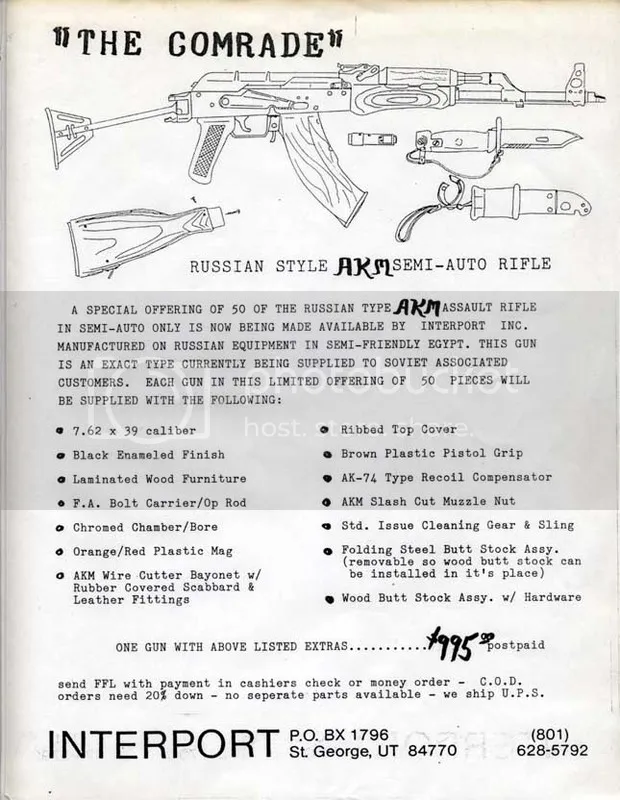
The first company to try this would be Finnish firm Valmet, modifying their Rk. 62 rifle in a downgrade back to the AK form with the M71 series. While these had initially been made for normal export sales, they found a niche in America as an AK variant without the importation bans on it, as well as being in more common calibers like 5.56 NATO. This, alongside the importation of original Rk. 62’s and later M.76’s allowed the Finns a new market to sell in, and Americans access to the AK. Later on into the 1970’s, Steyr would manage to work out a deal with Egyptian manufacturer Maadi for the importation of Maadi MISR rifles, direct clones of the AKM rifle. As legitimate as they were rife with quality control issues, and with high price tags to match, they still laid a groundwork of early AK’s in America. And one that was ready and waiting for someone to break in and make a new bottom line. And that company was Norinco.
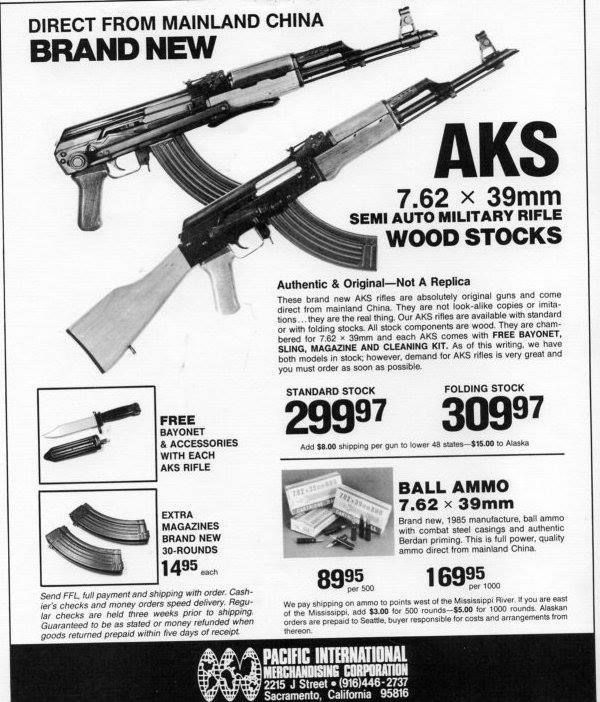
Starting in 1983, Norinco would begin selling a variety of weapons into the North American market, both through their own company as well as side company Polytechnologies or “Polytech”. They would sell both original style Type III AK-47’s to finally bring proper AK’s to the market, as well as flooding the nation with their entire product catalog. Rifles such as the Type 56, 56-1 underfolder and 56-2 side folder alongside variations in parts, stocks, furniture composition and later calibers with the Type 84S in 5.56 NATO. There was also the Type 56 SKS, so cheap that they were famously sold by the barrel and in a mixture of versions with stock type, barrel length and a few modified into the SKS-D pattern with AK mag wells. Then there were the clones of everything from the M1911A1 and M14 to the Margolin MCM and CZ-75. And in the midst of this and .22 pistols, the humble Type 54-1 entered the scene. The importation would include mostly 9×19 models, including the new Model 213 version with larger ergonomic grips fittingly borrowed from the Tokagypt 58, alongside a new version with a modified double stack 13 rounder magazine. This, combined with the sheer deluge of ammo allowed Norinco to become a major part of the American market. However with such a massive chunk of the market in their control, came a bit of controversy.
With the passing of the 1986 Hughes Amendment and violence picking up due to the new War on Drugs, American politicians would begin to take more and more interest in the concept of gun control for public safety. While the effectiveness of these has been proven a tad bunk, this was the same group of politicians who’d later think banning violent video games would stop school shootings. Alongside the rise of the Brady Campaign and politicians like Senator Chuck Schumer and Diane Feinstein, the Type 56 would crop up occasionally. Feinstein would famously be photographed with a Type 56-1 in a Senate meeting, and it’s safe to assume that the “shoulder thing that goes up” was in reference to the AK underfolder. Norinco didn’t take any chance to defend itself, and so the legislation began to roll out. In 1989, the HW Administration would pass the Federal Assault Weapons Ban, which would ban any imported “assault weapon” found without a sporting purpose. The Type 56’s would be swept up in it, although like most importers, Norinco found a loophole with the modified MAK-90. Their pistols remained exempt, but two things would come to end that. One of them was the full 1994 Assault Weapons Ban. But the other was a much bigger issue, and one that’d get Norinco struck out of the American market entirely.
Operation Dragon Fire
In April of 1994, the FBI and ATF would begin a sting operation investigating a tip off relating to a weapon smuggling operation that was trying to be started in the wake of the revised 1993 trade relation status. The meeting was with several Atlanta based members of Norinco and their subsidiary Polytech, regarding the attempted sale of illegal full-auto Type 56’s in the area. A member of it, Hammond Ku would famously promise investigators that, if they were interested, he’d be able to acquire them everything from rifles to RPG’s and even tanks. The deal was supposed to be for the importation to mafia contacts, but the ATF had intercepted it prior to the meeting. 2,000 Type 56-1 full auto assault rifles were discovered, the ring was disbanded and Norinco’s time in America was numbered. While importation of shotguns and ammunition was still allowed, alongside some sales of pistols, the gig was up. In 2003, they’d be sanctioned completely by the now George W Bush administration for the supposed sale of missile technology to Iran.

Norinco’s reign in America ended in a quiet pullout from the market, although it currently still holds a major chunk of the Canadian firearms market to this day. This pullout also saw a drop in quality, as now Norinco was striving more for quantity than quality in regards to their firearms appealing moreso to foreign export sales. At this same time, Norinco would begin making a very predatory name for itself on the illegal firearms trade as they became more and more involved in illegal firearms sales to a variety of nations. During the late 1990’s and early 2000’s, investigations into blood diamonds revealed that Norinco had been involved in “arms for mineral” deals across Sub-saharan Africa in places such as Sierra Leone, The Democratic Republic of the Congo and Zimbabwe. While they had not been the only defense contractor to do so, this has coincided with the Type 54’s new legacy in the wake of it’s pullout from the American market.
The gun of the yakuza crime syndicates.
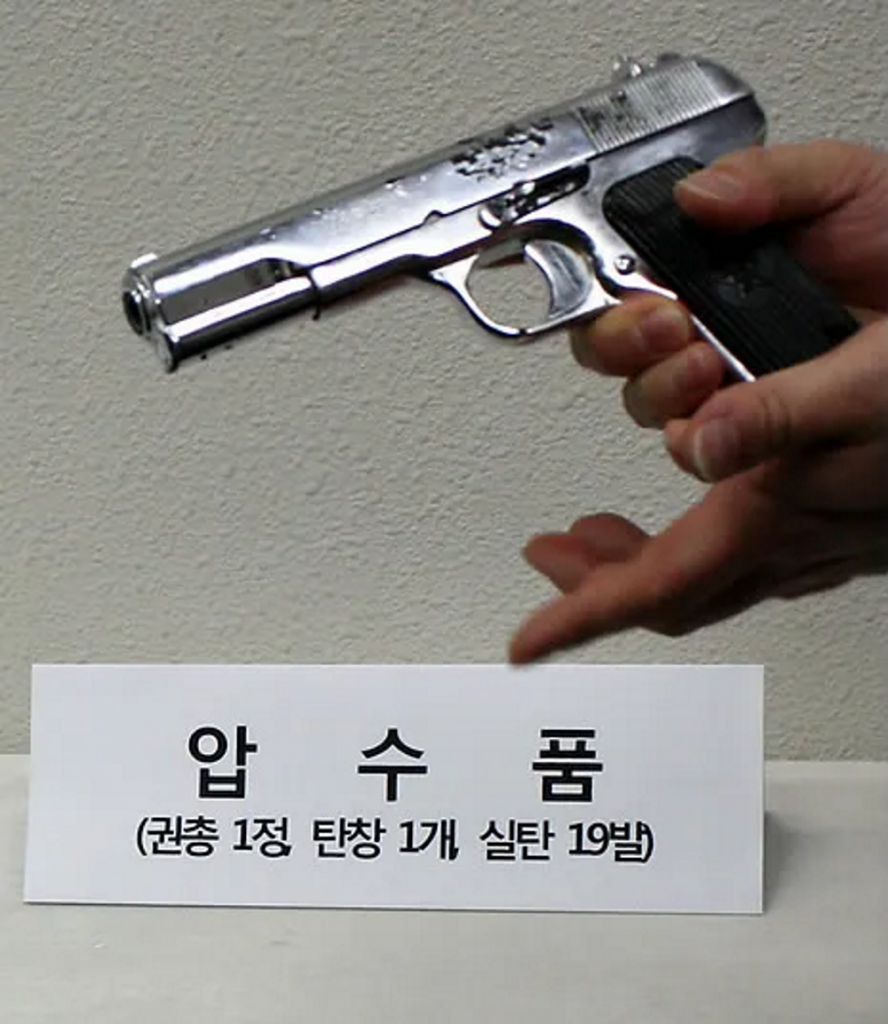
While the Type 54’s criminal reputation stems long before this point, as any surplus handgun on a market as tight as the Chinese one would inevitably do so, it wouldn’t be until the mid 90’s when the proliferation of them would pick up and become more and more common. Initially used by Triads in places like Macau and Hong Kong, the Type 54 has become increasingly common in Japan and across Southeast Asia. Starting in the wake of the Yama-ichi War of the late 1980’s, the Type 54 Tokarev would become a very common sight in the hands of the Japanese Yakuza criminal syndicates operating both within Japan itself and abroad in places such as South Korea. Due to a combination of restrictive Japanese laws, as well as the relative inward operations of Japanese gunmakers with their reliance on police or military contracts, it has lead the yakuza to reach outward for their arms and armament. This has included a mixture of arms from places such as the Philippines, Soviet Union but predominately China and almost overwhelmingly the Type 54 Tokarev. It has become incredibly common to see in raids on yakuza members and organizations, so much so that the word “Black Star” and “Tokarev” have begun to become catch-all terms for illegal firearms in Japan. And despite the years and relative age of the Tokarev platform, the handguns do still show up commonly both within Japan and with yakuza affiliates abroad in Asia.
Despite being technically replaced by the QBS-92 pistol in the early 1990’s, the Type 54 has not formally been pulled from Chinese service, reliably still used by the People’s Military Police and rear reserve/militia organizations of the PLA to this day. It’s also still in use by Vietnam, produced domestically at the Factory Z111 as the “K54”. The Vietnamese even have their own version of the Type 54 Model 213 with a 13 round double stack magazine, one that has begun to slowly replace the earlier K54 in service.
As of the writing of this article, the Type 54 remains in production at Norinco, in the modified form with the manual safety. Available in both blued and nickel finish, with chambering options in 9×19 or 7.62×25 Tokarev. Despite being a design pushing 100 years old, it still serves a duty to this day. Although that duty is questionable. From the handgun to supposedly liberate the working man of capitalist oppressors to the handgun of choice to new oppressors, whether communist or criminal. Both the liberator and the oppressor in equal measure.
With the history squared away, let’s cover the actual handgun.
The Type 54 In Detail
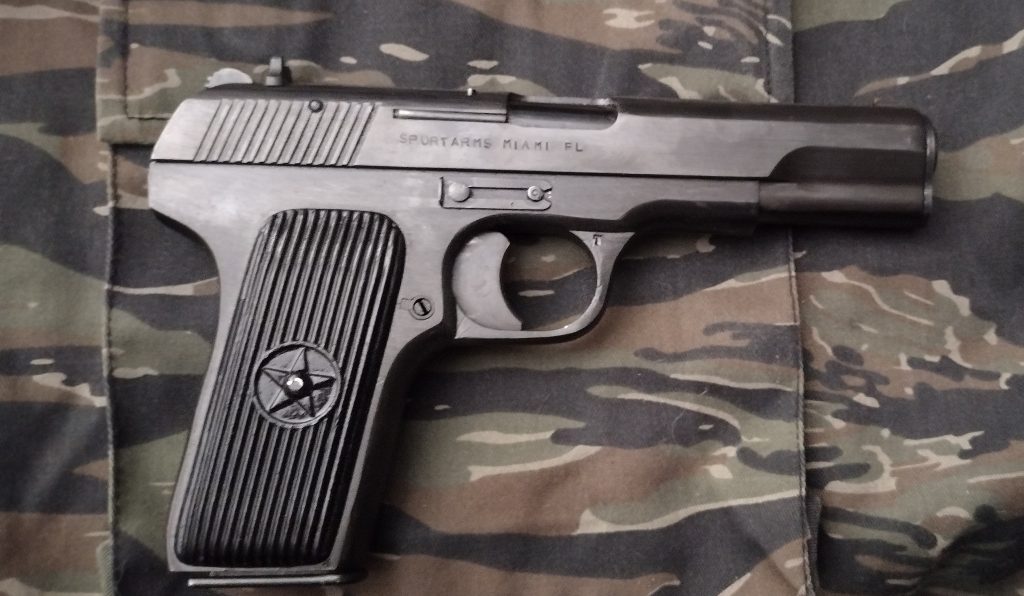
The Type 54 is a 9mm semi-automatic handgun firing from a modified form of the Browning swinging link lockwork, produced by Norinco. This model specifically is a Model 213 Export Model, as it says here on the slide. And yes, all of the slide text is off kilter. This gun is a “Made In China” joke already prepared and ready for use. Not a single letter on this gun is straight.
It weighs around 1.9~ pounds loaded, it has a 4.85~ barrel length so do as any guy does and round up to claim it’s 5” inches flat. It fires from 8 round magazines that are exclusive to the Type 54 because they’re 9mm only. Not that it changes much, the parts and guns are still plentiful enough to be found for below normal Tokarev prices if you’re smart enough to look around. It’s a single action only design, so it will only go bang if the hammer is cocked. Overall, it’s a pretty standard Tokarev at least in regards to the dimensions and basic outlook. That does however dodge the obvious questions of how it handles.
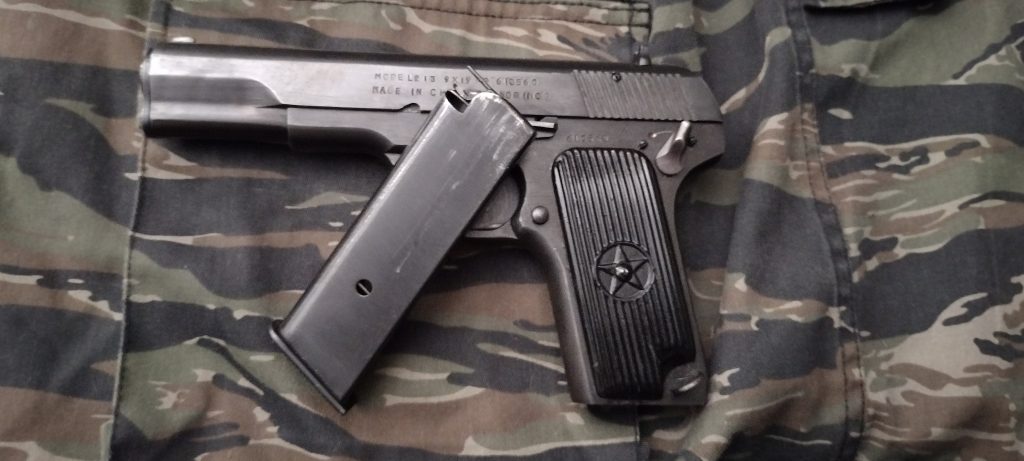
To say the Tokarev is “ergonomic” is a misnomer. It is ergonomic in the same way a Trabant is a good car. It isn’t, but because the standards for Communist products are so low, it is. The Tokarev has one of the most weirdly straight line grips on any modern handgun, with only a minimum of chamfering on the edges to make it sorta rounded off so it doesn’t just beat your hand into a rectangular pattern. It doesn’t help that the stock grips are just that, grips. They are designed solely to keep the meaty parts of your hand from tripping the trigger bar and causing it to fall out. They’re just there. And in the case of the Type 54, they are some of the brittlist plastic on the planet. For reference on the model you see here, when I purchased it, it had fake plastic white ones. The combination was, while minorly funny for a Communist handgun, not what I wanted so I elected to at first buy a replacement set from Numrich. They came, and in the process of fitting them, they had managed to shatter into three bits.
Chinese Quality. It deserves to have the grips just painted out of spite.
That level of glorious quality does extend to the gun itself, as it shares the godawful blued finish that you see on other Norinco products like the Type 56 AK’s. Not only is it ridiculously shiny, it is also the weakest blued finish on the planet. If you’re not careful, this finish will rust or wear off. The slide, barrel and overall lockwork makes a borderline comical tink sound every time you run the action for whatever reason. It gives the gun the feeling of the IzH-70 blowback air guns turned into live fire in places like England.
Controls of the Type 54 are basic, simple and still yet slightly weird. There’s realistically only four, five if you want to count the magazine release which is a stretch to say the least. In order you have the trigger, the slide release, the safety and the hammer. And each of them makes sorta sense to my Western mind. The trigger, and by proxy the trigger bar is the first thing that’ll mess with you with this gun. If you’ve used a 1911 at any point, this trigger should make sense. Big SAO trigger, right? Wrong. The Type 54 trigger is a borderline two-stage trigger, with a weird void of “slack” between it and the actual wall before the break. It’s like a SA/DA pistol with it’s extra bit of space before you reach the sear engagement point. Except this is single action. The trigger is still usable, don’t get me wrong but that’s weird.
The slide release is slim, long and a slightly simplified 1911 style one, without the detent so there’s no real way to idiot mark this gun. The monkey’s paw already has a finger curled though, as you have a much more annoying take down procedure. Which includes such fun things as a barrel bushing that only goes in at a 180 degree turn, and a recoil spring you have to force down to make said bushing fit. The safety, the big pro of the Type 54 over the other Tokarevs is decent. Manual safety, able to be engaged with the hammer cocked or uncocked. It’s a lever and it works backwards to how you think it does. Do you see the forward position of the safety? Towards the slide release?
That’s safe. So you have to flick backwards on the draw to disengage the safety. Or do as the original Soviets did and Condition 3 this gun. Although if you’re considering carrying a TT-33 in 2022, you’re either a Pashtun militiaman or insane. Or both. And the hammer is a hammer. Big, has a half cock notch, goes click as you cock it. Simple. Effective. Boring.

Sights are fairly simple as well, with a large rounded front blade alongside a rear notch, although the rear sight is a tad silly in it’s height, it does give a relatively simple albeit shallow squared off profile. Accuracy is decent enough for a 9mm service pistol of the era, nothing to write home about but if you’re intending to push this thing past that 50 yard limit, you’re wasting your bullets.
Still, it is a decent pistol. But the key word there is “decent”. What isn’t decent is the takedown of this pistol, which I would describe but there’s not enough swear words in the English language to realistically summarize how fiddly it is to do so. Have this photo of the field stripped Tokarev.
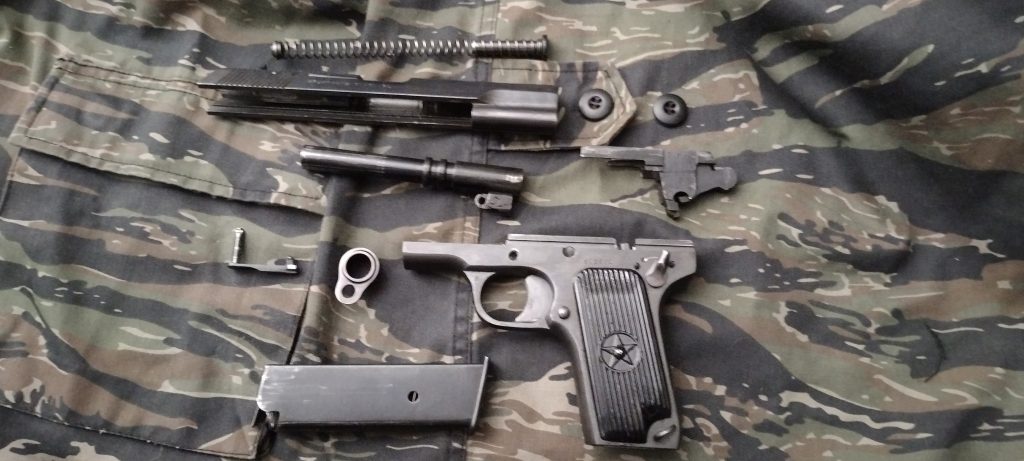
The Type 54 is a handgun that’s now so old that it’s on a life support machine no one knows how to properly turn off. And it’s one whose intentions have been lost over several decades, and to a point that’s left the gun perpetually surviving off of either desperation from lack of options or unfunny memes. From the icon of a new Red Army and defender of the homeland from fascist invasion to the internal struggle of communism and the brutality of infighting within the system. And now it settles into a meek role as a side piece for criminals. It’s seen a long life.
Now it serves as a pragmatic Tokarev option, balancing the “neat” nature of the Tokarev against the caliber itself. We can sit here all day making the same jokes about how the 7.62×25 cartridge will destroy body armor, but realistically the ammo you’re going to find will not be able to do that, and the stuff that will is going to cost more than your Tokarev itself. And none of us want to be going into a situation where we need armor penetration with a handgun as painfully out of date as a Tokarev, betting ancient Romanian spec PPSh ammo will save you from getting ventilated. The Type 54 allows you all of the “fun” of the Tokarev without having to shackle yourself to Ammoseek and the constant refreshing hoping that you will one day find ammo for less than .58 cents a round. All of the fun Tokarev stuff without the worrying ammo problems. It’s perfect for that niche.
And no other niche.
Because it’s terrible outside of that niche.




